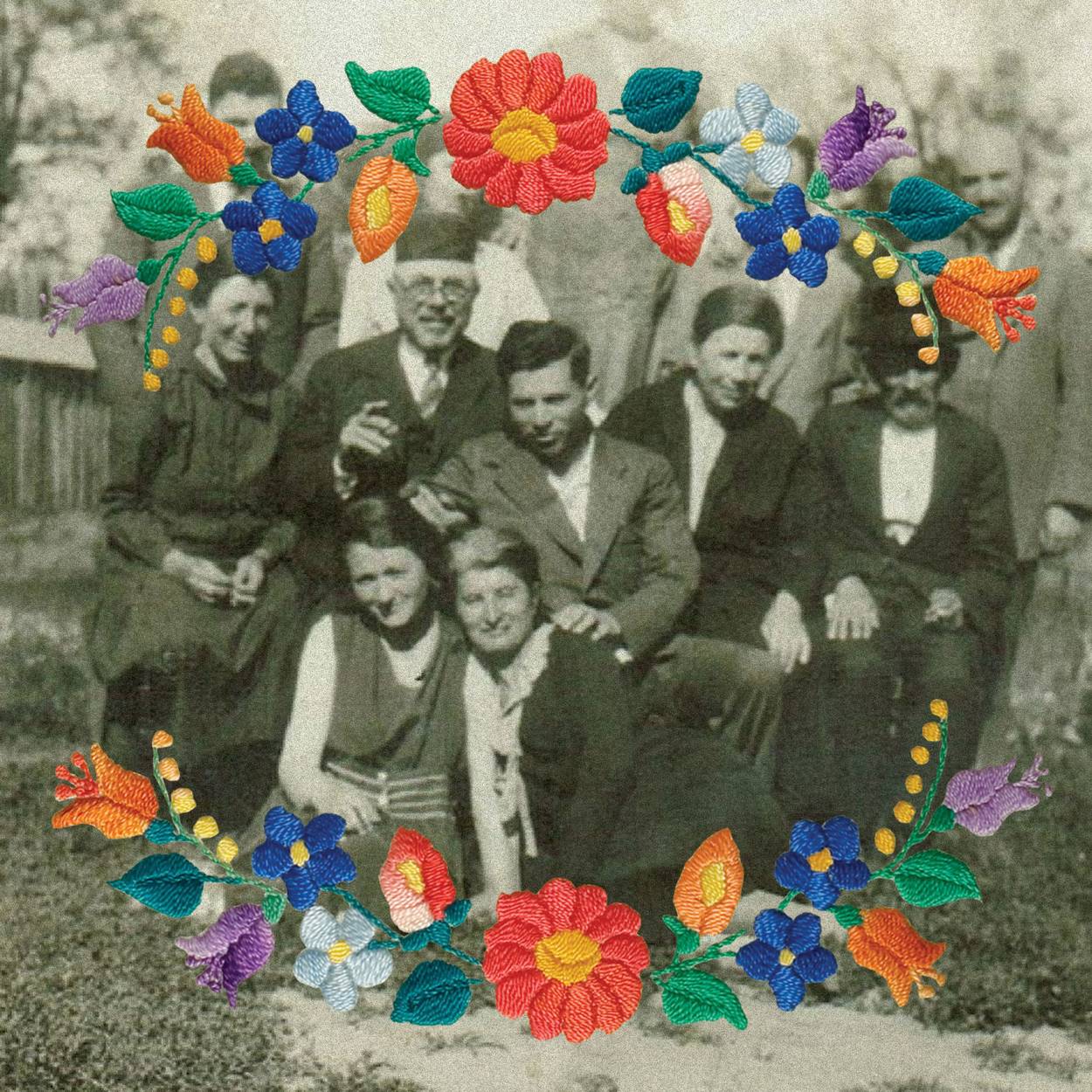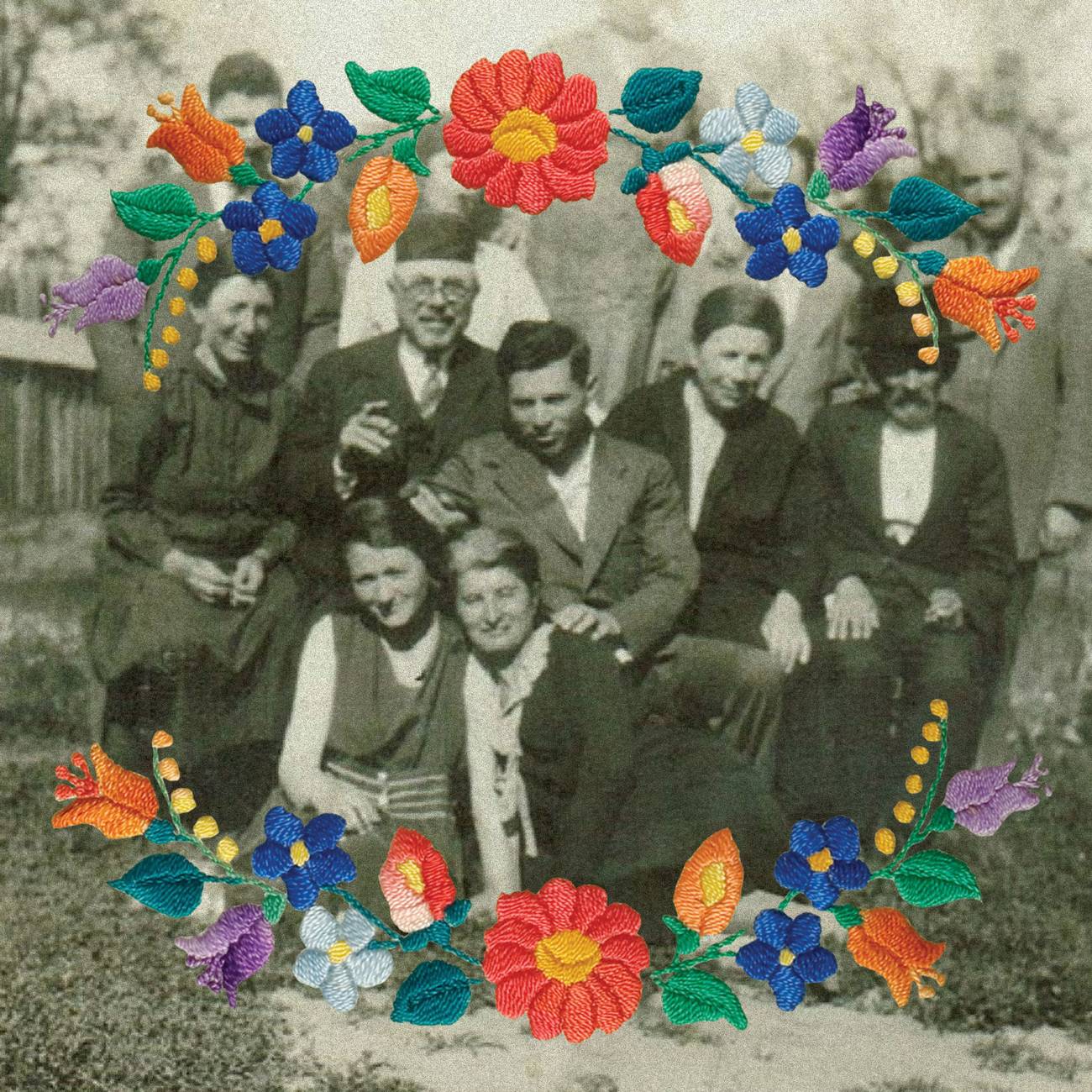A Stitch in Time
I never knew my grandmother, who died in the Holocaust, but I found a way to connect to her through embroidery




Valuables hidden by Jews who died in the Holocaust were unearthed recently during a routine excavation in Lodz, Poland. My grandmother had her own hidden wartime trove in the Hungarian town of Satmar (today known as Satu Mare, Romania). Instead of burying it under the ground, though, she stored hers above ground with a non-Jewish neighbor.
Unlike the Lodzers, whose treasures were menorahs, kiddush cups, and silverware, my grandmother’s treasures were her hand-embroidered tablecloths sewn as part of the dowry for my mother, her only child. Compared to the banquet-size cloths I spread on my table today, these were small and boldly colorful: one green, one orange, and a third white with a crocheted black border.
In late spring 1944, nearly half a million other Hungarian Jews boarded trains to Auschwitz. My mother and grandmother were among them; only my mother returned. After liberation, my mother collected the tablecloths. The neighbor, less than thrilled to see her alive, nonetheless relinquished them to her. In time, my mother married and started a family. For years she spread my grandmother’s handiwork on her Shabbos table—until she discovered easy-care synthetic lace tablecloths, sentiment trounced by practicality.
After that, the tablecloths languished in a drawer for decades.
I’ve always been curious about my maternal grandmother, whose name I bear. Had she survived, she would have been a major player in my life but my mother didn’t talk much about her. I don’t think she ever fully recovered from her loss; telling stories was probably still too painful. Instead, I nudged my mother and the handful of other relatives with memories until I uncovered the bare bones of my grandmother’s biography.
Born to the rabbi dayan, the rabbinical court judge, of a tiny Hungarian town, my grandmother had been smart, sharp-witted, and, in her context, even a bit of a maverick. A cousin remembered how she’d been the first to try ice cream when it was a cutting-edge novelty dessert. I learned that she visited a rebbe for advice and blessings, but also loved novels and movies. I also learned that she smuggled cans of sardines across a locked border—during the interwar years, her father’s town remained part of Hungary while her city was annexed by Romania—for her father to have his Shabbos fish.
My grandmother was gutsy in other ways, too. After nearly dying from childbed fever, she defied doctors’ orders not to have any more children by giving birth to my mother.
A few years ago, I traveled to the places where my grandmother spent her short life. Lacking anyone knowledgeable to guide me, that trip didn’t add much.
I wondered: Was there another path to explore? I thought perhaps I could channel my grandmother’s spirit by learning the language of embroidery.
I’d embroidered briefly as a child. In fourth grade at my day school, the boys took bar mitzvah instruction while the girls embroidered elaborate mishloach manot covers (now, everyone attends a coed Jewish-living class). I never finished mine. Other than sewing the occasional button, I avoided needles and thread.
So, why try again now? Convenience. An embroidery group had started in my neighborhood. The price was low and there was the potential for a major mystical payoff.
Let’s just say that séance didn’t happen right away.

For the first few weeks, I struggled mightily. Even the basics of needle-threading, knot-making, and splitting the multistranded embroidery thread brought me to four-letter-word-sputtering levels of frustration.
I wanted to quit—why be a masochist? But I soldiered on. With the help of my infinitely patient teacher and my fellow students, I even embroidered a flower of an uncertain botanical genus. After that, I started making a matzo cover. It remains above my freezer in a plastic bag waiting to be completed; I’m not sure that will ever happen. On a basic level, I had learned the craft. But love it? Never.
Why had this work been so dear to my grandmother? For her, the language of embroidery was her mother tongue. In her world and indeed everywhere in the predigital world, the tiniest of girls were taught to push threaded needles into cloth. My grandmother had talent. Strangers even commissioned her tablecloths.
My newfound fluency enlarged my appreciation for her work. Now I could see how well her stitches lined up. I could even name them—stem, blanket, satin, and padded satin—and I peeked underneath to perform the ultimate litmus test: The backs of my grandmother’s embroidered tablecloths were as pristine as their fronts, with not a loose thread in sight.
Unlike me, my grandmother also had the sharp eyesight needed for needle crafts—if she’d worn glasses, as I have since I was 7, she would have been murdered upon arrival at Auschwitz. Instead, she survived for nearly five months; my mother lit a yahrzeit candle for her every year on the day after Simchat Torah. But there was more.
Though her stated goal was to assemble her daughter’s dowry, I suspect that the repeated insertions of thread into cloth were her path to mental health.
“For those divorced from the people they love, sewing can be a way to maintain a sense of self,” writes fabric artist Clare Hunter in her 2020 book Threads of Life: The History of the World Through a Needle and Thread. Hunter relates stories of war prisoners, mental patients, and even the tragic Mary Queen of Scots, all utilizing their passion for embroidery to soothe their frayed nerves. I suspect that my grandmother’s repeated insertions of thread into cloth served as her natural tranquilizer.
Even before Auschwitz, my grandmother’s life was challenging. In a world of couples and families, she was a woman alone, separated from her husband, not on account of marital discord but for financial reasons; my grandfather had gone to the U.S. for work. Because he’d entered illegally, he couldn’t return for even a brief visit.
And that wasn’t all. Even though they lived within walking distance of each other, my grandmother couldn’t even visit with her beloved parents or siblings. The post-WWI treaty lines placed them on opposite sides of a locked border. Occasionally, when the powers that be were having a humanitarian moment, the borders were unlocked and the family hiked into no man’s land for a reunion.
With their Hungarian folkloric themes and wildflower images, do my grandmother’s tablecloths express longing for her childhood home in Hungary?
Perhaps, but there’s more.
By placing her tablecloths in storage rather than abandoning them to fate, my grandmother affirmed the value of her labor—all that planning, executing the designs, purchasing the cloth and threads, and the hours and hours spent sewing were precious to her.
Her actions also indicated that during those dark times, when so many people gave up hope, she dreamed of a future that would include her handiwork covering her daughter’s Shabbos table.
“Needlework,” writes Hunter, “is part of a personal memoir. Bury your face in a textile and you can nose up the scents of lives far away and long ago. Conserved within it is the passage of time harboring the spirit of those who created and handled it.”
Maybe my grandmother isn’t gone without a trace. Maybe I can hold my nose up to her tablecloths and breathe in her spirit more deeply than I ever imagined possible.
Carol Ungar’s writing has appeared in Next Avenue, Forbes, NPR, the Jerusalem Post Magazine, and Fox News. She also leads memoir writing workshops on Zoom.